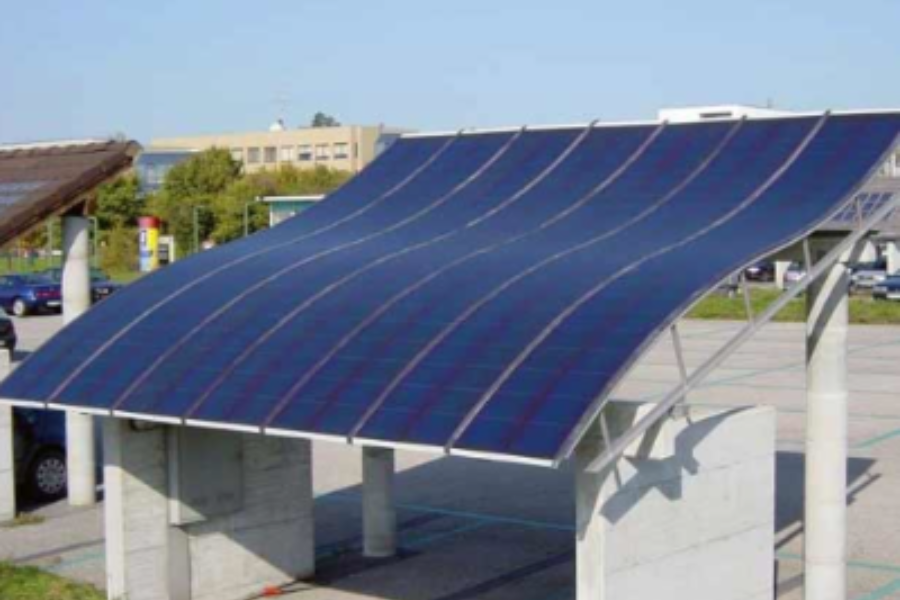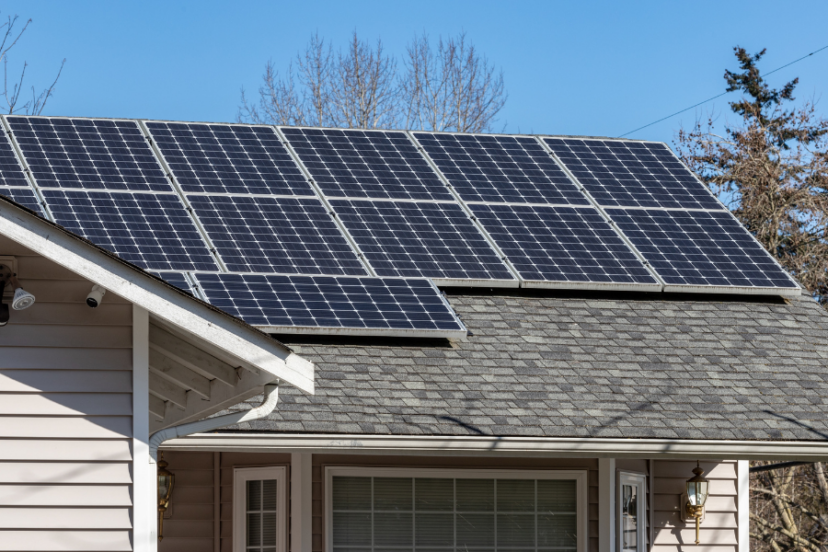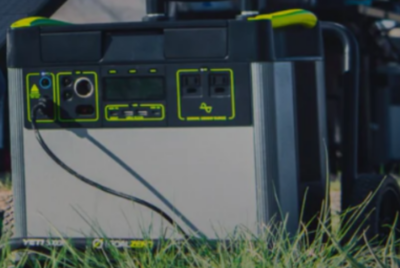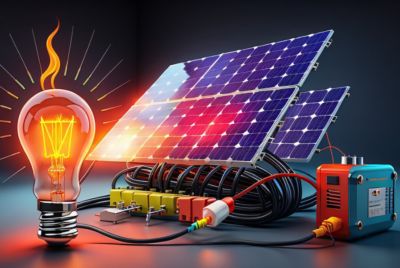Solar Power System For Home
Unleash the Potential of Renewable Energy
As an electrical engineer deeply passionate about sustainable solutions, I’ve witnessed the remarkable transformation in the world of energy, particularly the adoption of a solar power system for home. With each passing day, more homeowners are turning to the sun to power their lives, and for good reason. As I delve into the intricacies of solar power systems, allow me to guide you through the process of harnessing this clean, renewable energy source for your home.
Advantages of Solar Power: Illuminating the Path to Savings
The allure of solar power is multifaceted, offering an array of benefits that extend beyond the reduction of your electricity bills. By embracing solar energy, you embark on a journey toward a greener, more sustainable future. Not only does solar power contribute to a substantial decrease in your carbon footprint, but it also paves the way for considerable long-term savings. Imagine being able to generate your own electricity, thus minimizing reliance on traditional power sources and mitigating the impact of fluctuating energy costs.
Components of a Solar Power System: Piecing Together the Puzzle
At the core of a solar power system lies a meticulous arrangement of components, each playing a pivotal role in transforming sunlight into usable energy. Solar panels stand as the vanguard, capturing sunlight and initiating the conversion process. The inverter takes the generated direct current (DC) power and translates it into alternating current (AC) power, suitable for powering your home. To ensure a continuous supply of energy even during the absence of sunlight, batteries step in, storing excess energy to be harnessed at your convenience.
Sizing Your Solar Power System: A Tailored Approach
Sizing a solar power system is essential to finding the perfect fit – it requires an accurate understanding of your energy needs and consumption patterns. Factors such as your location, roof orientation, and the amount of sunlight exposure play a vital role in determining the ideal system size. By analyzing these variables, you can ensure that your solar power system meets your energy demands while optimizing efficiency.
Choosing the Right Solar Panels: Quality and Efficiency
In the landscape of solar energy, the solar panels serve as the artistic canvas upon which the sun’s radiant masterpiece is captured and transformed into usable electricity. As a homeowner embarking on the solar journey, you stand at the crossroads of choice, presented with an array of solar panel options, each with its own unique attributes and merits. Let’s delve into this world of solar panels and unravel the criteria that will guide you toward selecting the perfect canvas for your solar dreams.
Monocrystalline Panels: Elevating Efficiency and Elegance
Monocrystalline solar panels, often revered as the pinnacle of efficiency, stand as a testament to technological advancement in the realm of solar energy. These panels are crafted from a single crystal structure, allowing them to convert sunlight into electricity with unparalleled efficiency. The tight molecular structure results in higher energy conversion rates, making monocrystalline panels an ideal choice for those seeking optimal energy production, especially in limited space scenarios.
Beyond their formidable efficiency, monocrystalline panels present an aesthetic allure. Their sleek, uniform design blends seamlessly into the architecture of your home, enhancing its visual appeal. If your rooftop canvas is confined by space limitations, monocrystalline panels maximize energy output while maintaining an unobtrusive presence.
Polycrystalline Panels: Balancing Efficiency and Affordability
In the vast expanse of solar panel options, polycrystalline panels carve a niche as reliable workhorses that strike a harmonious balance between efficiency and cost-effectiveness. These panels are composed of multiple silicon crystals, making them slightly less efficient than their monocrystalline counterparts. However, this difference in efficiency is often outweighed by their lower price point, making them an attractive option for those looking to harness the benefits of solar energy without breaking the bank.
Polycrystalline panels shine in scenarios where ample roof space is available. Their slightly larger physical footprint compensates for their marginally lower efficiency, resulting in a well-rounded energy production profile that aligns with your consumption needs.
Thin-Film Panels: Flexibility and Adaptability
For those seeking innovation and adaptability, thin-film solar panels emerge as the avant-garde choice. These panels depart from the crystalline structure and embrace a flexible, lightweight design that transcends conventional installations. Thin-film panels are known for their versatility, as they can be integrated into unconventional spaces that traditional panels might struggle to accommodate.
While thin-film panels tend to have lower efficiency compared to their crystalline counterparts, their flexibility opens doors to creative installations. They can be seamlessly integrated into building materials, such as roofs, windows, or even facades, offering a blend of functionality and aesthetics. If your solar vision encompasses a harmonious fusion of technology and design, thin-film panels offer a canvas of possibilities.
The Art of Selection: Factors to Consider
As you embark on the voyage of selecting the perfect solar panels, consider the trifecta of efficiency, durability, and warranty. Efficiency dictates the panels’ ability to convert sunlight into energy, impacting the long-term return on your investment. Durability ensures the panels can withstand the elements and stand the test of time. Robust warranty coverage provides peace of mind, safeguarding your solar investment against unforeseen contingencies.
Remember, the choice of solar panels is a reflection of your unique needs, aspirations, and circumstances. Whether you’re drawn to the elegance of monocrystalline panels, the pragmatic balance of polycrystalline panels, or the innovative flair of thin-film panels, your selection becomes a canvas upon which your solar vision takes form. It’s a decision that resonates with both efficiency and aesthetics, a harmonious merging of art and science that propels you toward a brighter, more sustainable future.
Inverter Selection: The Heart of Energy Conversion
In the symphony of solar power systems, the inverter assumes a role that is both subtle and profound. Often overshadowed by the glinting solar panels, this unassuming device stands as the linchpin of energy conversion, orchestrating the transformation of raw sunlight into the electricity that powers our daily lives. As we unravel the requirements of inverter selection, you’ll come to appreciate its pivotal significance in making solar energy usable within our homes.
At first glance, an inverter might appear to be a mere conduit, facilitating the transition from direct current (DC) to alternating current (AC). Yet, beneath this elementary function lies a complex interplay of technologies and considerations that determine the efficacy and efficiency of your entire solar power system. While this component might be underestimated, it’s crucial to recognize that the quality of your inverter can significantly impact your system’s performance, energy yield, and longevity.
The primary role of the inverter is to convert the DC power harnessed by your solar panels into the AC power that powers your appliances, electronics, and lighting. This metamorphosis from the solar panels’ language to our homes’ electrical system is what renders solar energy seamlessly compatible with our daily routines. With this transformative power in mind, the significance of inverter selection comes to the forefront.
Two prominent contenders dominate the landscape of inverter options: string inverters and microinverters. The choice between these two hinges on various factors that encompass system complexity, shading challenges, and the desire for advanced monitoring capabilities.
String Inverters
These workhorses are designed to handle the energy output of multiple solar panels grouped together in strings. A single-string inverter is responsible for managing the energy generated by all the panels in that string. While they are generally more cost-effective and efficient for larger systems, string inverters can face challenges when shading occurs. If even a single panel in a string is affected by shading, the entire string’s energy generation can be compromised. However, advancements in technology have led to the introduction of power optimizers, which mitigate shading issues by optimizing the output of each individual panel.
Microinverters
These diminutive devices take a different approach, offering one microinverter per solar panel. This decentralized design ensures that each panel operates independently, unaffected by the energy performance of its neighbors. Microinverters are particularly effective in systems prone to shading or complex roof orientations, as the individual optimization of panels helps maintain overall system efficiency. Furthermore, microinverters often come with enhanced monitoring capabilities, allowing homeowners to monitor the performance of each panel in real time.
As you navigate the choice of inverter selection, it’s imperative to consider your specific circumstances and priorities. Are you aiming for maximum efficiency, even in the face of shading? Do you value the granularity of monitoring each panel’s performance individually? Or does cost-effectiveness and simplicity guide your decision? Each option bears its own merits and limitations, making it essential to align your inverter choice with your unique needs.
In conclusion, while the inverter might not bask in the limelight like the solar panels, it holds the power to elevate your solar power system from a mere collection of components to a finely tuned symphony of energy conversion. By recognizing its pivotal role and the distinctions between string inverters and microinverters, you empower yourself to make an informed choice that resonates with the heart of your solar aspirations. Remember, a thoughtfully selected inverter is the conduit through which the sun’s radiant energy seamlessly becomes an integral part of your daily life.

Battery Storage Options: Empowering Energy Autonomy
For those seeking energy autonomy and the ability to utilize solar power even during non-sunlight hours, battery storage proves invaluable. These batteries store excess energy generated during the day, ensuring a seamless power supply during the evening or on cloudy days. Lead-acid batteries offer affordability, while lithium-ion batteries excel in efficiency and longevity. The decision between these options depends on your budget and long-term objectives.
Installation Process: Professionalism vs. DIY
Embarking on the installation journey prompts the choice between hiring professionals or embracing a do-it-yourself (DIY) approach. While the latter might seem tempting, professional installation ensures compliance with local regulations and safety standards. Moreover, experts possess the technical know-how to optimize your system’s performance and longevity. From permitting to meticulous system integration, entrusting the process to professionals guarantees a smooth transition to solar power.
Return on Investment (ROI): A Glimpse into the Future
Understanding the return on investment (ROI) is a crucial step in making an informed decision about adopting a solar power system. The ROI takes into account the upfront costs of installation and equipment, balanced against the ongoing savings achieved through reduced electricity bills. As you calculate the payback period, consider factors such as available incentives, rebates, and the potential for selling excess energy back to the grid.
Maintenance and Upkeep: Nurturing Your Solar Investment
Just as any technology requires upkeep, a solar power system demands periodic maintenance to ensure optimal performance. Regular cleaning of solar panels removes dust and debris that might obstruct sunlight absorption. Routine inspections enable you to detect and address any issues promptly. Moreover, monitoring system performance and energy generation allows you to promptly address any anomalies and maintain peak efficiency.
Environmental Impact: Illuminating the Path to Sustainability
Beyond the financial and practical advantages, embracing solar power boasts a profound positive impact on the environment. By harnessing the sun’s energy, you contribute to a substantial reduction in greenhouse gas emissions, mitigating the adverse effects of conventional energy production. Your choice to adopt solar power resonates as a powerful step towards a more sustainable and ecologically balanced future.
Conclusion: Embrace the Radiance – Solar Power System for Home
As I conclude this journey through the intricate landscape of home solar power systems, I invite you to imagine the possibilities that lie ahead. By embracing solar energy, you aren’t merely installing a system; you’re adopting a lifestyle that harmonizes technological innovation with environmental consciousness. You’re making an investment in a greener future while reaping the rewards of reduced bills, energy autonomy, and a stronger connection with the planet.
FAQs: Solar Power System for Home
1. Can I completely eliminate my electricity bill with a solar power system?
Absolutely. A well-designed and properly sized solar power system can generate enough energy to meet your household’s electricity needs, potentially eliminating your electricity bill altogether.
2. How much space is needed for solar panels in a typical home?
The amount of space required depends on factors such as your energy consumption, the efficiency of the solar panels, and the available sunlight in your area. A professional assessment can provide accurate sizing.
3. What happens to excess energy generated by the solar system?
Excess energy generated by your solar system can be fed back into the grid through net metering or stored in batteries for use during non-sunlight hours. In some cases, you might even receive credits from your utility company for the surplus energy you contribute.
4. Is it possible to install a solar power system in areas with less sunlight?
Yes, solar power systems can still be viable in areas with less sunlight. While the energy generation might be lower than in sunnier regions, advancements in solar panel technology and energy storage can make solar power a feasible option in such areas.
5. Are there government incentives available for installing home solar power systems?
Yes, many governments offer incentives such as tax credits, rebates, and grants to encourage the adoption of solar power. These incentives can significantly offset the upfront costs of installation and enhance the financial viability of going solar.





Comments are closed.